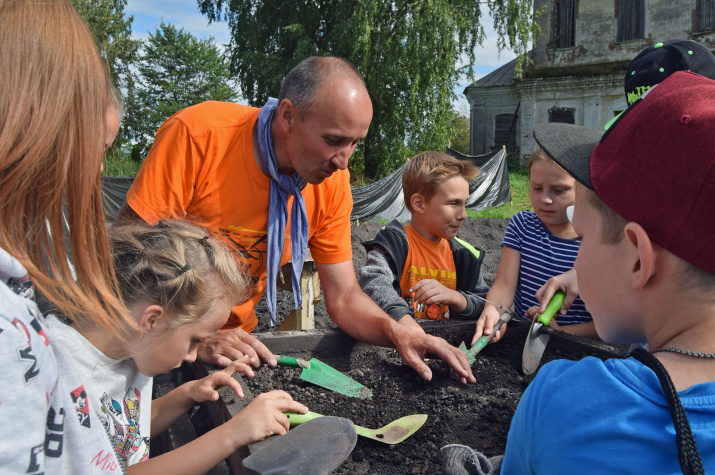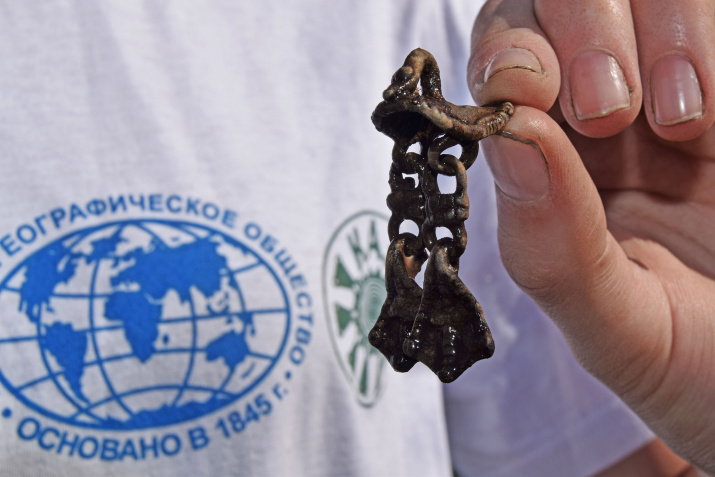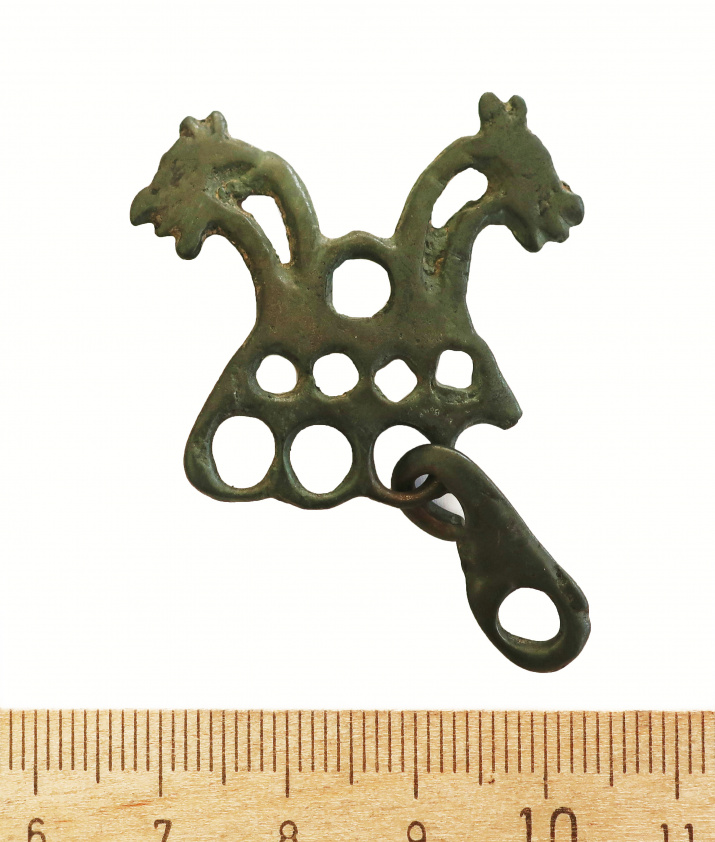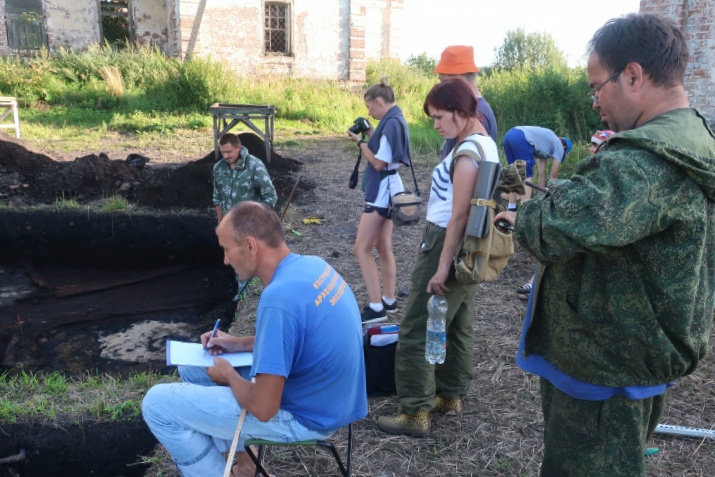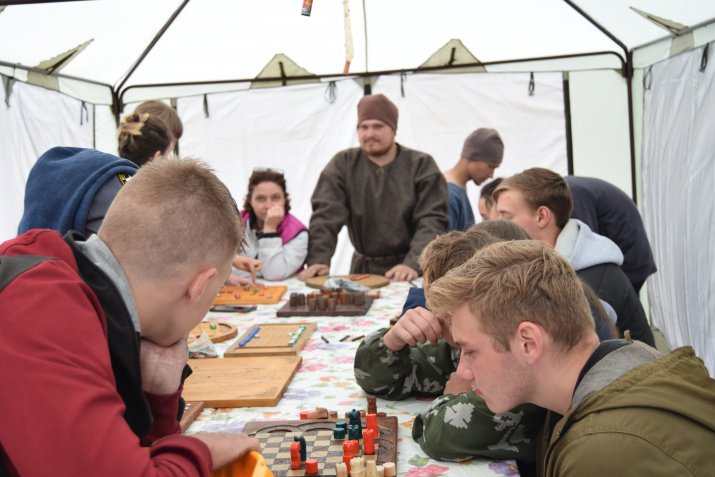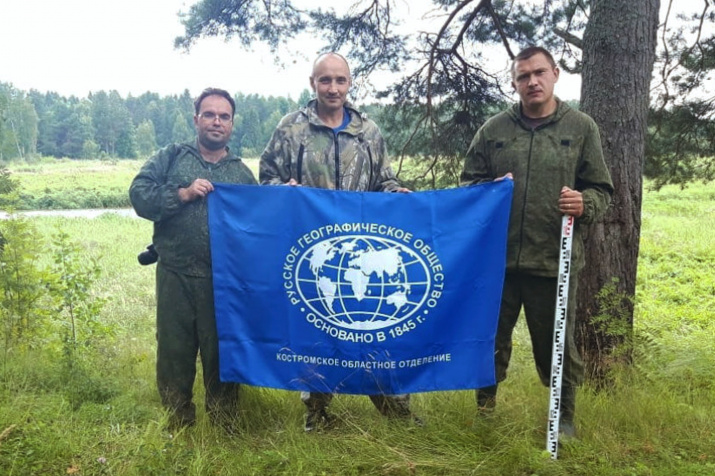On December 18, a press conference was held at the headquarters of the Kostroma Regional branch of the Russian Geographical Society. There, the results of the archaeological excavations of the 2020 season at the Unorozh hillfort were presented. The expedition "Historical Landscape of the Lake Galichskoye region" was organized by the Kostroma Regional Branch of the Russian Geographical Society.
The eхpedition season of 2020 turned out to be rich in interesting finds right from the very beginning. Elegant metal pendants, a "lattice" ring made of copper alloy, glass beads, a button, a pectoral cross, bone items – all these unique artifacts of the 2nd millennium BC, 9th-11th, 11th-14th centuries can be seen at the temporary exhibition at the Museum of the Russian Geographical Society, which will open in January 2021.
All the objects found allow scientists to recreate in the study the everyday life of an ancient settlement, the customs of its inhabitants, the intricacies of trade routes of the early Middle Ages. Ancient Unorozh is considered to be a crossroads of trade routes, a place of mutual enrichment of the cultures of the East and West, a developed center of crafts for several centuries.
“Now, the discovered artifacts are being actively researched in a laboratory – radiocarbon analysis of the wood of buildings and archaeological research of metal items, the study of the chemical composition of metal and glass, the attribution of bone remains,” says the Head of the expedition, Candidate of Historical Sciences, member of the Russian Geographical Society Alexander Novikov. “A set of bone amulets found at the excavations of Unorozh is very interesting. The set includes a bear's claw, a fox's tooth, and, especially, numerous pendants made of beaver's talus bones. This, of course, reflects the beliefs of local residents (the hunters who believed they were protected by the forces of nature), reveals their spiritual world, allows us to trace the inextricable connection of this world with economic activity, dependence on beaver trade. Glass items (beads) date back to the 9th-early 11th century – the period of the Viking Age. These are imported products made in the Syro-Palestinian region, Egypt, Mesopotamia, Byzantium. All these finds confirm that Unorozh, for more than one and a half centuries, remained a trade and craft settlement involved in the process of international trade at that time. A very interesting find of this year is a silver coin minted on behalf of Khan Berdibek in 1358 in the ancient city of Azak, now it is the city of Azov. The coin dates back to the time of the Golden Horde. This is evidence that in the late Middle Ages, in the 14th-15th centuries, the territory of Unorozh was associated with historical events and socioeconomic processes that took place on the territory of Kostroma Oblast and Rus’ as a whole."
Not only archaeological excavations but also soil studies were carried out at the Unorozh hillfort, which will make it possible to reconstruct the conditions of the natural environment of that time in the vicinity of Lake Galichskoye.
The expedition considers scientific and educational work to be one of its important tasks. Therefore, numerous volunteers and schoolchildren are involved in the work, for whom excavations at Unorozh turn into a fascinating journey into the past. The Second Unorozh Archaeological Games, timed to coincide with the 175th anniversary of the Russian Geographical Society, took place during the expedition. Three teams of schoolchildren from Galich, Galichsky District and Kostroma competed on a difficult route, where they had to overcome an obstacle course, find a way through fields and forests, show their ability to shoot a bow, forge in a forge, brew "magic potions" and solve difficult riddles prepared for them by historians.
The excavation season at Lake Galichskoye ended in September. Leading historians and archaeologists from different regions of the country, numerous volunteers, as well as students of the Orekhovskaya and Rossolovskaya schools of the Galichsky District, the Kostroma lyceum №41, and Galich schools №1 and №4 took part in the research of the archaeological sites of the Late Bronze Age, the Early Iron Age and the Early Middle Ages – the Unorozh hillfort and the settlement of Voznesenskoye I.
Together with the expedition members, volunteers and schoolchildren, the journalists Anastasia Fisher and Igor Sadovnikov experienced all the difficulties and joys of the expedition season. In the summer of 2020, they shot a documentary about the cultural heritage of the Galich land.
For the first time, illustrative materials of the expedition were published in the format of an album of photographs. A collection of scientific papers on the results of two scientific and practical conferences "Cultural heritage of the Galich land" has also been published. The audience was introduced to these publications at the presentation of the expedition results at the headquarters of the Kostroma Regional branch of the Russian Geographical Society. A premiere of the documentary took place there as well. This documentary will later be transferred to all libraries and schools in the region for use in local history lessons.
Exploration of the Unorozh hillfort will continue in 2021. Since 2015, it has been supported by the Russian Geographical Society.

